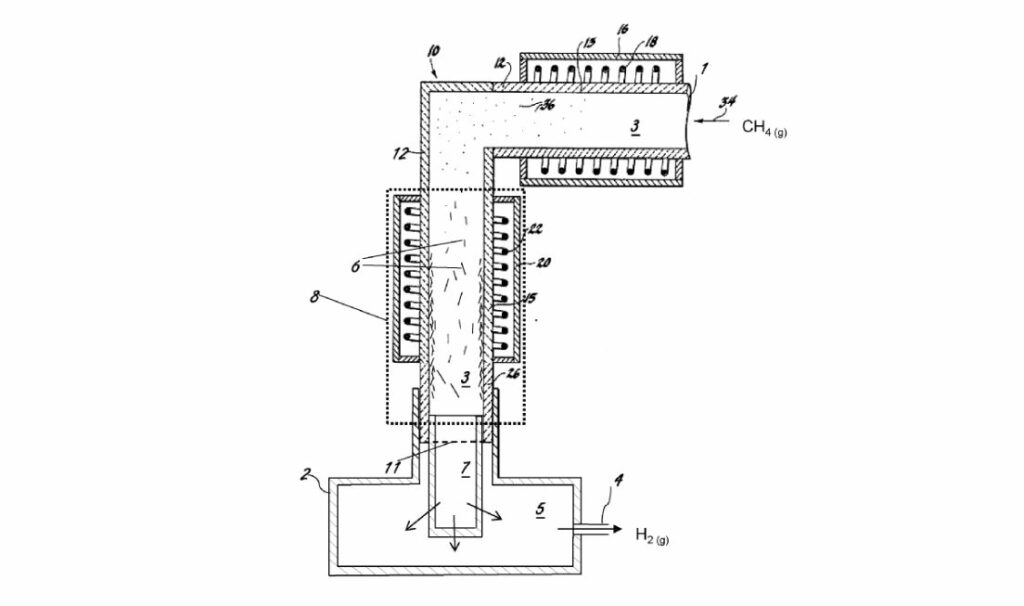This patent, submitted by Innova Hydrogen Corp., details a method and apparatus for producing graphene through the pyrolysis of hydrocarbons from a hydrocarbon feedstock.
Additionally, it includes a system for recovering hydrogen gas, which is generated as a byproduct of the pyrolysis process. The apparatus features an elongated reactor designed with various components for effectively separating hydrogen gas from other components in the reaction mixture.
Introduction to Graphene Production and Hydrogen Recovery
Graphene, a one-atom-thick sheet of carbon atoms arranged in a honeycomb lattice, has impressive mechanical, electrical, and thermal properties. The demand for efficient and cost-effective methods of producing graphene has driven significant research and development efforts. The method outlined in this patent utilizes hydrocarbon feedstock in a pyrolysis process to generate high-quality graphene while simultaneously recovering hydrogen gas, a valuable byproduct.
Key Components of the Apparatus
The patent-protected apparatus comprises several integral components designed to optimize the pyrolysis process and subsequent hydrogen recovery.
1. Elongate Reactor
The reactor is a critical component. It features a first end that receives the hydrocarbon feedstock and a second end where the reaction mixture exits. Within the reactor, a channel facilitates the flow of the fluid mixture, which includes the hydrocarbon feedstock undergoing pyrolysis.
2. Terminal Section
Attached to the second end of the reactor, the terminal section plays a crucial role in gas separation. This section is selectively permeable to hydrogen gas only, allowing it to pass through while blocking other reaction mixture components.
3. Hydrogen Collection Section
This section is connected to the terminal section and is designed to collect the hydrogen gas that has been separated. It is intentionally constructed to be impervious to hydrogen gas to ensure efficient collection and storage.
Benefits and Implications of the Technology
The dual functionality of this apparatus, producing graphene and recovering hydrogen gas, presents multiple advantages. Graphene production through pyrolysis of hydrocarbons could lower production costs and offer a simpler method than other techniques like chemical vapor deposition or mechanical exfoliation.
Recovering hydrogen gas as a byproduct prevents wastage and provides a potential revenue stream, given hydrogen’s rising importance as a clean energy source. This combination of producing a high-value material and recovering a useful byproduct demonstrates an efficient use of resources and could have significant industrial applications.
Innova Hydrogen Corp.’s patented method and apparatus for producing graphene through hydrocarbon pyrolysis and a hydrogen gas recovery system represents a forward-thinking approach in material science and energy production. By effectively harnessing both the primary product and byproduct of the process, this technology holds promise for more sustainable and economical production methods in the future.
